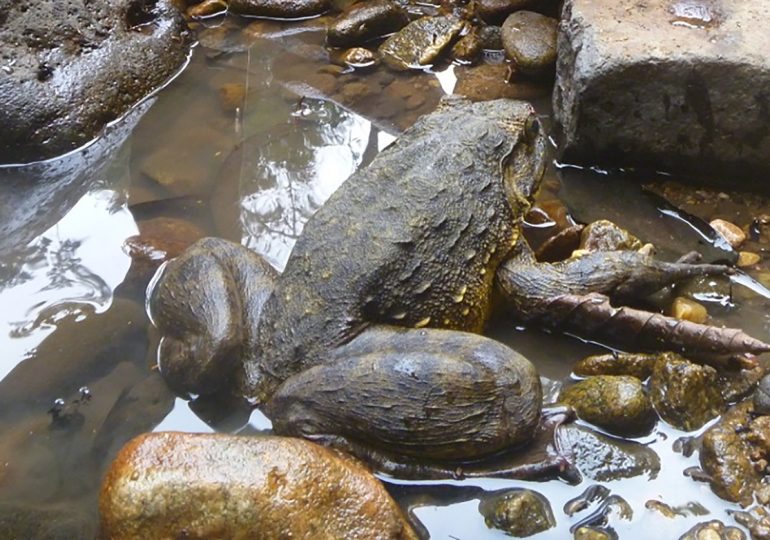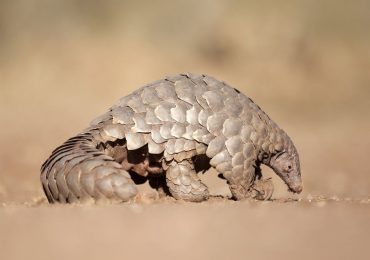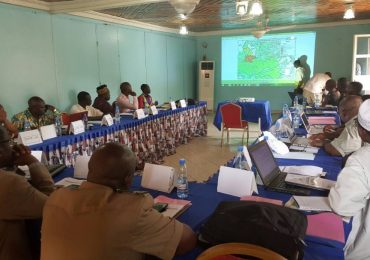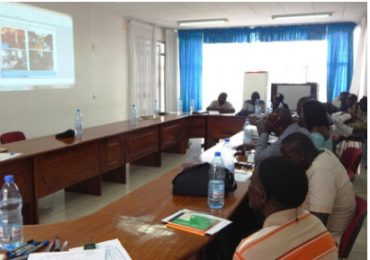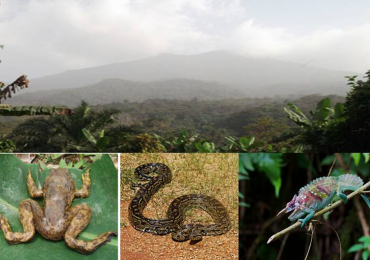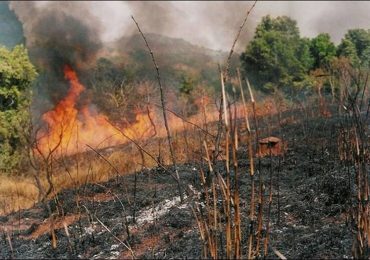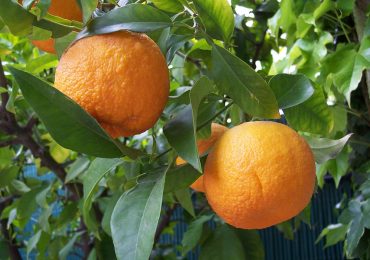Amphibians provide services such as food (Goliath frog) serving as source of protein to the local population. Medicine used to test for human pregnancy during the 20th century, Jensen and Camp, 2003), traditional medicines throughout the world used to treat a variety of ailments, from warts to heart disease, are derived from frogs.
By Philip Tem Dia
Amphibians also provide regulating services by altering disease transmission and pest outbreaks. Predatory amphibians can help reduce the spread of mosquito-borne illness through predation and competition with mosquitoes.
Amphibians are also cultural tools used in literature, music, art, jewelry, decorations and many more uses. Yet these values are constantly being ruined in a number of ways.
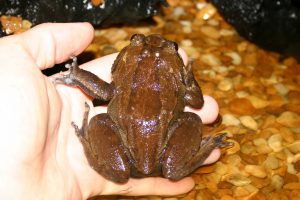
Amphibian populations are declining worldwide at an alarming rate, a phenomenon now considered to be an “amphibian extinction crisis”, and Cameroon is not an exception.
Many amphibians have shown increasing signs of stress in recent years due to over-exploitation for food or pet trade, pollution in the processes of nature and applications of agro-chemicals.
This includes poisonous pesticides contaminating water, land and tree leaves where frogs live and breed. These lead to loss of habitat and climate change of anthropogenic origin.
According to the most recent 2008 global assessment of amphibians (globalamphibians.org), nearly one-third (32%) or 2,109 species of the world’s amphibian species are threatened, compared to 12 % of avian and 23 % of mammalian species.
Amphibians are considered the most threatened animal group worldwide (Stuart et al., 2004). With one-third of all amphibian species threatened, the global decline of amphibians is of great concern to conservation bodies and the world at large.
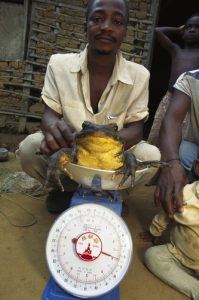
The Goliath frog is the largest frog in the world and is found only in the restricted areas in Cameroon and in the Monte Alen National Park in Equatorial Guinea.
Goliath frog inhabits fast-flowing rivers and streams with sandy bottoms that are typical for humid, dense rainforests. The Goliath frog (Conraua goliath) lives in or near fast-flowing rivers and streams in rainforest, preferring warmer, slower rivers than Conraua robusta, though faster rivers than C. crassipes. It can survive in secondary habitats close to rivers as well as in forest, but not in very heavily degraded areas (farm bush).
Breeding occurs in streams and small rivers. The young rest by flowing water during the day.
Contrary to the high biodiversity value of this area, the Goliath frog’s habitat is threatened by destruction through logging and human encroachment to open up farmlands and hunting in particular.
The western and northern flank of Mt. Nlonako in the Nkongsamba area is heavily cultivated with the forest destroyed up to an elevation of approximately 1,100m. This has affected the population density and distribution of amphibians on the mountain.
A study shows that the number of Goliath frogs in the wild is decreasing drastically due to deforestation, hunting their meat is a popular source of food for the indigenous communities and other African tribes, and over-collecting from the wild due to pet trade.
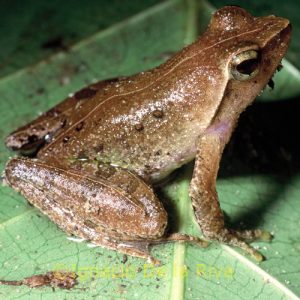
The most important threat to this species is hunting for food. New, sophisticated traps for catching this species are now being used in the Nkongsamba area of Cameroon. It is because of these factors that the Goliath frog has been classified by IUCN as endangered species.
It is against these drawbacks that ERuDeF is in dire need for the creation of this Mount Nlonako-Kupe-Maunenguba conservation complex to ensure the protection and conservation of these fragile species and other still to be identified within this ecosystem, for the future.
The goal of the project is to fight against the extinction of endangered amphibian species and their habitats in Cameroon.
The proposed complex, apart from its diversity with high level of endemic birds, plants and animal species, hosts more than 150 amphibian species and about 93 species around Mt Nlonako alone (Herrmann et al, 2004).
Some of the amphibian species that are found in the Mounts Nlonako-Kupe-Maunenguba conservation complex includes the hairy frog (Trichobatrachus robustus), Goliath frog (Conraua goliath), and the Puddle frog; (Phrynobatrachus auritus), which are found in the families; Arthroleptidae, Conrauidae and Phrynobatrachidae, respectively.


